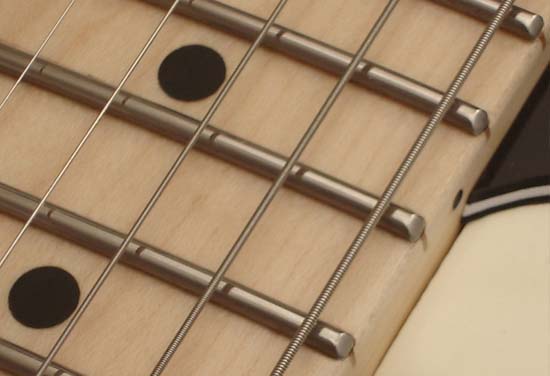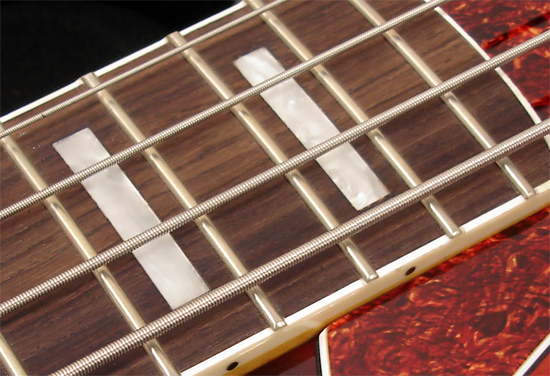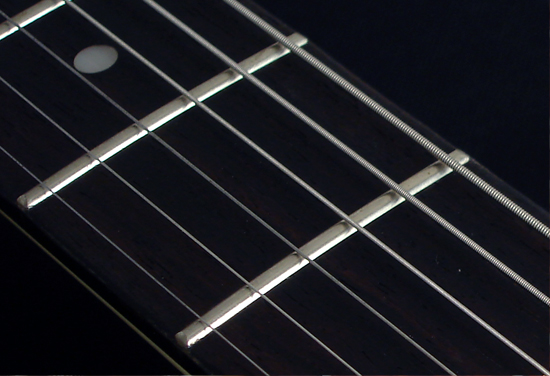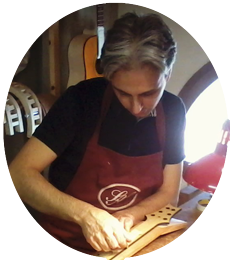
Visit the new website: www.buildyourownguitaronline.com
HOME > Guitar frets sizes
GUITAR FRET SIZES
The height of the fret is the parameter that most affects the "feel" of the fretboard and the intonation responsible for the sound of the instrument. Its width influences the smoothness of the hand, but always depending on the height.
The sound is also influenced by the distance between the string and the fretboard surface. The greater the distance, the greater the volume of the note pressed on the fret.
In general, we can divide the frets and their impact on the neck and sound as follows:
HIGH AND WIDE FRETS
They are suitable for a soloist playing rock and metal music.
This type of fret guarantees the maximum speed of execution due to the almost total absence of finger contact on the fretboard, facilitates bending (the fingertip clings better to the string) and the techniques of "hammer on" and "pull off".
A high and wide fret also provides more stability and sustain due to the greater mass and lower point of contact between the fret and the string and allows more adjustments before it needs to be replaced.
On the other hand, the very high frets are more uncomfortable in the fretboard’s slide and the greater height forces a relatively light touch in order not to go off key ((scalloped effect).
In order to keep the pitch of the instrument constant, the wide frets must be straightened and above all rounded more often than the narrow ones. The wider the fret, the more it will tend to wear out, moving the exact pitch point of the note out of pitch (see figure below).

"Eruption" Frudua Design model.
WIDE AND LOW FRETS
These frets were frequently used on the old Paul LEs, famous for their very comfortable fretboards.
The wide and low frets will be more comfortable for the slide but are more uncomfortable when bending because of the greater contact between the fingertips and the fretboard. They should also be adjusted and rounded more often than narrow ones to avoid pitch problems, as described in the previous paragraph.
SMALL AND LOW FRETS
In the early ‘50s and ‘60s, the electric guitar had a more rhythmic role than anything else. Particularly small frets and basses are therefore typical of vintage guitars and are not very common on newer instruments that need larger frets both for reasons of "feel" and to resist longer the wear and tear of a mostly solo use.

MEDIUM JUMBO FRETS
The medium height and medium width fret offers many of the advantages of high frets and eliminates almost all of their disadvantages.
The ratio between bending comfort and slide comfort is optimised and the slightly narrower width ensures better intonation even when the button is worn over time, while still offering the possibility of numerous adjustments before replacement.
The middle frets are ideal for the versatile musician, for rock rhythms, where emphasis and dynamics are a must, and for the solo genre which is technical but not exaggerated, fast but still expressive.



